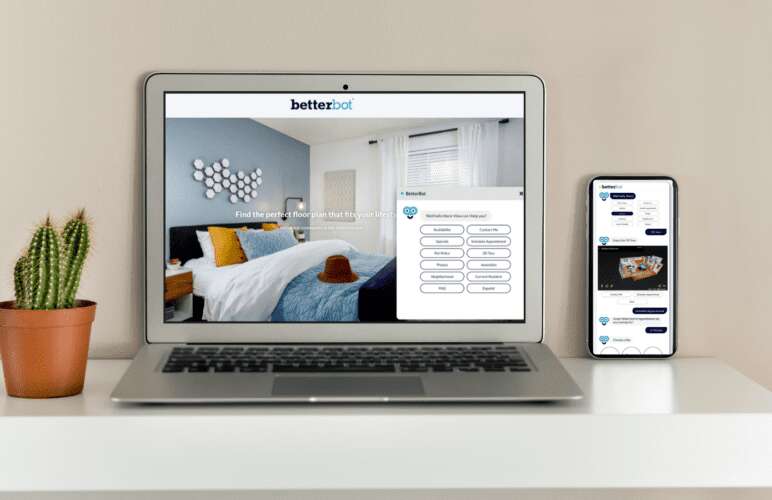Introducing a new process to your team can be daunting, so we’ve put in extensive effort to ensure that our onboarding process stands out. When integrating a new automation solution into your team, there are three key factors to prioritize:
Understand the Needs and Challenges
In the multifamily industry, the integration of tech solutions aims to address a multitude of specific needs and challenges faced by both property managers and tenants alike. For property managers, these challenges often revolve around optimizing operational efficiency, improving tenant satisfaction, and enhancing overall property management processes. Tech solutions are designed to streamline tasks such as lease management, maintenance requests, and communication with tenants, ultimately reducing administrative burdens and increasing productivity. Additionally, these solutions aim to address issues related to property security, energy management, and regulatory compliance, ensuring that multifamily properties operate smoothly and meet the evolving needs of residents in a competitive market.
To gain a comprehensive understanding of these needs and challenges, conducting surveys or interviews with stakeholders is essential. Property managers, maintenance staff, leasing agents, and tenants all offer valuable insights into their preferences, pain points, and areas for improvement within the multifamily environment. Surveys can help identify common themes and trends across different stakeholder groups, while interviews allow for more in-depth exploration of specific issues and potential solutions. By actively engaging with stakeholders, tech solution providers can tailor their offerings to meet the unique requirements of multifamily properties, fostering greater adoption and acceptance among users. Additionally, involving stakeholders in the decision-making process helps build trust and collaboration, ultimately leading to more successful implementation and long-term benefits for all parties involved.
Stakeholder Engagement
In any technology implementation process within the multifamily housing sector, involving all relevant stakeholders early on is paramount to its success. This inclusive approach ensures that the perspectives and requirements of various parties, including property managers, residents, maintenance staff, and key decision-makers, are considered from the outset. Property managers can provide valuable insights into operational needs and challenges, while residents’ input can shed light on user experience preferences and concerns. Maintenance staff can offer valuable feedback on the practicalities of implementing and maintaining the new technology, ensuring its long-term sustainability. By engaging all stakeholders at the onset, potential issues can be identified and addressed proactively, fostering a sense of ownership and collaboration throughout the implementation process.
Moreover, clear communication about the benefits of the new tech solution is essential for gaining buy-in and addressing any apprehensions. Property managers must articulate how the technology will improve efficiency, enhance resident satisfaction, and contribute to the overall success of the multifamily property. By highlighting specific advantages such as cost savings, streamlined processes, and improved resident experiences, stakeholders are more likely to understand the value proposition of the new solution. Additionally, addressing any concerns or misconceptions upfront through transparent communication helps to build trust and confidence in the technology adoption process. Regular updates and opportunities for feedback further reinforce the message that stakeholders’ voices are heard and valued, fostering a collaborative environment conducive to successful technology implementation.
Pilot Program
Implement a pilot program in a small-scale setting before a full rollout. This allows you to identify potential issues and make adjustments based on real-world usage. If you have multiple properties to work with, it’s recommended that you use a diverse set of 3-5 properties for your pilot. In addition, you want to ensure you have the proper amount of data and allow 60-90 days before evaluating the success of your test group. Once you’ve evaluated your results, you can determine if the solution makes sense to roll out portfolio-wide.
Efficient Onboarding Process
If the onboarding process seems to drag on for days, it’s a red flag. Implementing an automation solution should be seamless and swift. A swift onboarding process ensures that your residents can quickly access the information they need. Your dedicated team should work diligently to ensure prompt delivery of your solution, allowing you to start reaping the benefits of your new automation without delay.
Simple Set-Up
You shouldn’t have to build the automation solution from scratch yourself—that’s a hefty task! Setting up your automation solutions should be hassle-free. Your automation solution provider should offer insights into what renters are most interested in and streamline the process. Deciding on conversation flows shouldn’t consume countless hours.
User-Friendly Training
Your team shouldn’t spend endless hours on training. The new automation solution should alleviate the workload, not add to it. Your on-site staff should grasp how the automation solution assists them, empowering them to focus on leasing. Additionally, selected team members should be able to access the tool’s dashboard to keep information updated and generate reports. Training should be straightforward and easy, freeing up more time to concentrate on more complex tasks.
Bonus Tip: Embrace the Excitement of New Technology
Incorporating a new solution into your existing tech stack might seem daunting, but it doesn’t have to be. New technology should be embraced with excitement—it’s there to help. Onboarding your automation solution should be an enjoyable and stimulating experience, not a tedious one. It’s crucial to prioritize these principles when considering an automation solution.
Integration with Existing Systems
When implementing a new technological solution in the hospitality industry, it is imperative to ensure seamless integration with existing property management systems or other relevant software to prevent disruptions in workflow. This integration facilitates a smooth transition and allows for the efficient exchange of data between different systems, ensuring that all departments can access accurate and up-to-date information in real-time. By seamlessly integrating the new tech solution with existing systems, minimize downtime, avoid costly errors, and maintain productivity levels. Moreover, a well-integrated tech solution enables hotel staff to leverage familiar interfaces and workflows, reducing the learning curve and accelerating adoption. Ultimately, prioritizing seamless integration enhances operational efficiency, improves communication across departments, and maximizes the benefits derived from the new technology implementation.
Scalability
When selecting a tech solution for multifamily properties, it’s crucial to choose one that can scale effectively to accommodate the growing needs of the property over time. By considering future expansions and upgrades during the decision-making process, property managers can avoid quickly outgrowing the chosen solution and minimize the need for costly replacements or overhauls down the line. An ideal tech solution should offer scalability features that allow for seamless integration with additional units, buildings, or amenities as the property expands. Additionally, it should be flexible enough to adapt to evolving technological advancements and changing tenant preferences without requiring significant modifications or disruptions to existing systems. By investing in a scalable tech solution from the outset, multifamily property owners can future-proof their investments and ensure long-term success in an ever-evolving market landscape.
Cost-Benefit Analysis
Conducting a thorough cost-benefit analysis is essential to ensure that any investment in a new tech solution aligns with the value it brings to the multifamily property. This analysis involves meticulously evaluating both the potential costs associated with implementing the technology and the anticipated benefits it will provide. On the cost side, factors to consider include upfront expenses such as purchasing the technology, installation costs, and any required training for staff members. Additionally, ongoing costs such as maintenance, software updates, and technical support must be factored in to determine the total cost of ownership. Conversely, on the benefit side, the analysis should assess the various ways in which the technology will add value to the property. This may include improving operational efficiency, enhancing resident satisfaction, increasing revenue opportunities, or differentiating the property in the competitive market. By weighing these costs and benefits against each other, property owners and managers can make informed decisions about whether the investment in the new tech solution is financially viable and aligned with the overall goals and priorities of the multifamily property.




